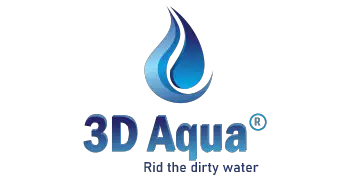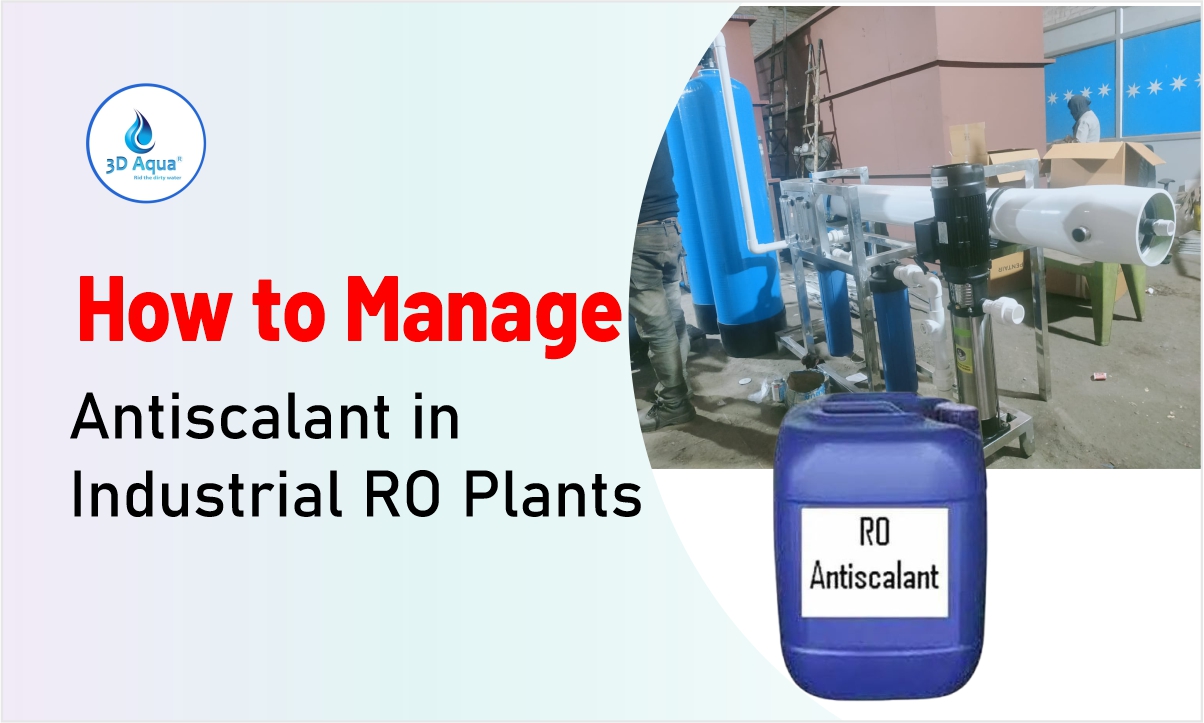Industrial Reverse Osmosis (RO) plants play a critical role in providing clean, purified water for various sectors like manufacturing, pharmaceuticals, food processing, and more. However, one of the significant challenges faced by these plants is the issue of scaling on membranes. Scale formation is a major problem that decreases the efficiency of RO systems and can lead to high operational costs and frequent maintenance needs. To prevent scaling and extend the life of the membrane system, effective antiscalant management is essential.
Antiscalants are chemicals used in RO plants to prevent the formation of scale by interfering with the crystallization of minerals and metals that otherwise accumulate on membrane surfaces. By optimizing the use of antiscalants, industrial RO plants can ensure continuous, efficient operations while minimizing the risk of damage to membranes. This article discusses the importance of antiscalant management, selection criteria, dosing control, and performance optimization strategies for industrial RO systems.
Understanding the Importance of Antiscalant Management
The success of any industrial RO plant depends on ensuring the membranes function effectively over time. Membrane scaling is one of the most common issues faced by RO plants. Scaling occurs when dissolved salts, such as calcium carbonate, calcium sulfate, silica, and magnesium salts, exceed their solubility limits, leading to the formation of crystals that adhere to the membrane surface. As the crystals accumulate, they clog the pores of the membranes, reducing water permeability and ultimately decreasing the plant’s efficiency.
Over time, if scaling is not addressed, it leads to higher energy consumption, increased cleaning frequency, premature membrane replacement, and system downtime, all of which contribute to higher operational costs. Antiscalants help mitigate these problems by inhibiting the growth of crystals and preventing them from attaching to the membrane surface, thus ensuring the RO system operates efficiently.
Antiscalant Selection Criteria for RO Systems
The choice of antiscalant is a critical factor in maintaining the performance of an industrial RO plant. Selecting the right antiscalant depends on several factors, including the type of water being treated, the chemical composition of the feedwater, the operating conditions, and the membrane materials. Below are some key criteria for selecting the most suitable antiscalant for your RO system.
1. Feed Water Analysis
The first step in selecting an antiscalant is performing a thorough water quality analysis. The feed water chemistry will indicate the types of scaling compounds present, such as calcium, magnesium, silica, barium, and iron. By identifying the specific salts that are likely to form scale in the system, you can select an antiscalant designed to target those compounds. For example, calcium carbonate requires an antiscalant that specifically prevents its crystallization, while silica scaling may require a different type of chemical.
Monitoring the feed water regularly is crucial, as changes in the water composition, such as increased hardness or dissolved solids, may require adjustments in the antiscalant dosage or selection.
2. Membrane Compatibility
Different RO membranes are made from various materials, such as polyamide, cellulose acetate, or thin-film composite. These materials have varying levels of resistance to chemical exposure. It is vital to select an antiscalant that is compatible with the type of membrane used in your system to avoid potential damage.
Membrane manufacturers typically provide compatibility guidelines for chemicals used in the system, including recommended pH ranges, temperature limits, and exposure durations. Antiscalants should be chosen based on these parameters to avoid degradation of the membrane material, which could affect system efficiency and lifespan.
3. Temperature and pH Tolerance
The effectiveness of an antiscalant depends on the water temperature and pH levels in the RO system. Higher temperatures can increase the likelihood of scaling, and extreme pH levels may cause certain antiscalants to lose their effectiveness or interact with other chemicals in the system.
Antiscalants with a wide pH and temperature tolerance are ideal for systems operating under variable conditions. For instance, some systems may experience fluctuating temperatures or variations in pH due to changes in feedwater composition, so choosing a versatile antiscalant ensures reliable performance.
4. Cost-Effectiveness
While selecting the right antiscalant is important, cost is also a major consideration for industrial operators. The most expensive antiscalant may not necessarily be the best solution for every plant. It is crucial to conduct a cost analysis to determine the most economical option based on chemical costs, dosing requirements, and operational efficiency.
When evaluating cost-effectiveness, it is essential to consider the long-term benefits of using a high-performance antiscalant. Effective antiscalant management reduces scaling and the need for frequent cleaning, which can save costs related to water treatment chemicals, energy, and membrane replacement.
Dosing Control Methods for Optimal Performance
Once the appropriate antiscalant is selected, dosing control becomes crucial to ensure that the system operates efficiently and effectively. Proper dosing ensures that enough antiscalant is used to prevent scaling without overusing the chemical. Both underdosing and overdosing can lead to problems in system performance.
1. Dosing System Components
A modern dosing system typically consists of chemical storage tanks, metering pumps, injection points, and monitoring equipment. The storage tanks hold the antiscalant, while metering pumps regulate the flow rate of the chemical into the system. Injection points are strategically located to ensure uniform distribution of the chemical throughout the feedwater stream.
Proper installation of the dosing system is vital to ensure accurate chemical delivery and prevent issues such as air binding or siphoning, which can reduce the efficiency of the system.
2. Monitoring Parameters
Effective dosing control requires continuous monitoring of critical system parameters such as feedwater quality, system pressure, flow rates, and permeate quality. Regular monitoring ensures that scaling potential is accurately assessed, allowing operators to adjust dosing levels accordingly.
For instance, if there is an increase in the concentration of scaling compounds in the feedwater, the dosing system can be adjusted to compensate for the higher scaling risk. Key monitoring tools include online analyzers that measure important water quality parameters, which can be integrated with automated dosing systems to ensure accurate chemical delivery.
3. Automated Dosing Control
Automated dosing systems provide the most precise chemical management by continuously adjusting antiscalant dosage based on real-time feedwater conditions. These systems use sensors to measure key parameters and adjust the flow of antiscalant accordingly.
Feed-forward control systems can anticipate scaling potential based on factors like temperature and flow rate, while feedback control systems monitor system performance and adjust dosing levels to optimize protection against scaling. By ensuring that the right amount of antiscalant is used, automated dosing systems help reduce chemical consumption and improve system efficiency.
Performance Optimization Strategies
Beyond proper dosing and chemical selection, regular system optimization is necessary to maintain the efficiency and longevity of industrial RO plants. The following strategies help ensure that the plant operates at its peak performance.
1. Cleaning Protocol Development
A well-structured cleaning protocol is essential for maintaining membrane performance. Cleaning removes any scale buildup that might have occurred despite the use of antiscalants, ensuring the system remains efficient. Cleaning protocols should define the frequency, chemical selection, cleaning solutions, and flow rates for the cleaning process.
Regular cleaning reduces the risk of fouling and scale buildup, extending the lifespan of the membranes and improving overall system performance.
2. Data Collection and Analysis
Collecting and analyzing operational data helps identify trends that may indicate potential issues with scaling or dosing. By analyzing data such as water quality, energy consumption, and chemical usage, operators can identify areas for improvement and optimize the system’s efficiency. Regular analysis also helps determine the effectiveness of the antiscalant program, enabling operators to make informed decisions about adjustments or improvements.
3. Training and Maintenance
Training plant operators to understand the system dynamics, chemical interactions, and scaling mechanisms is critical to successful antiscalant management. Well-trained personnel can monitor system performance more effectively, making necessary adjustments before problems arise.
Regular maintenance of dosing equipment, pumps, and membranes ensures that the system remains in top condition and minimizes the risk of unexpected failures.
Conclusion: Optimizing Your RO Plant with Effective Antiscalant Management
Proper antiscalant management is essential for maximizing the performance and longevity of industrial RO plants. By selecting the right antiscalant, dosing it correctly, and optimizing system performance, plant operators can minimize scaling risks, reduce operational costs, and extend membrane life.
At 3D Aqua Water Treatment, we understand the complexities of antiscalant management in industrial RO systems. Our experts offer customized solutions to help your plant achieve optimal performance. Contact us today to discuss how we can assist you in selecting and managing the ideal antiscalant program for your industrial RO plant.
Contact Us: Phone: +91-8963089630
Email: info@3daqua.in

